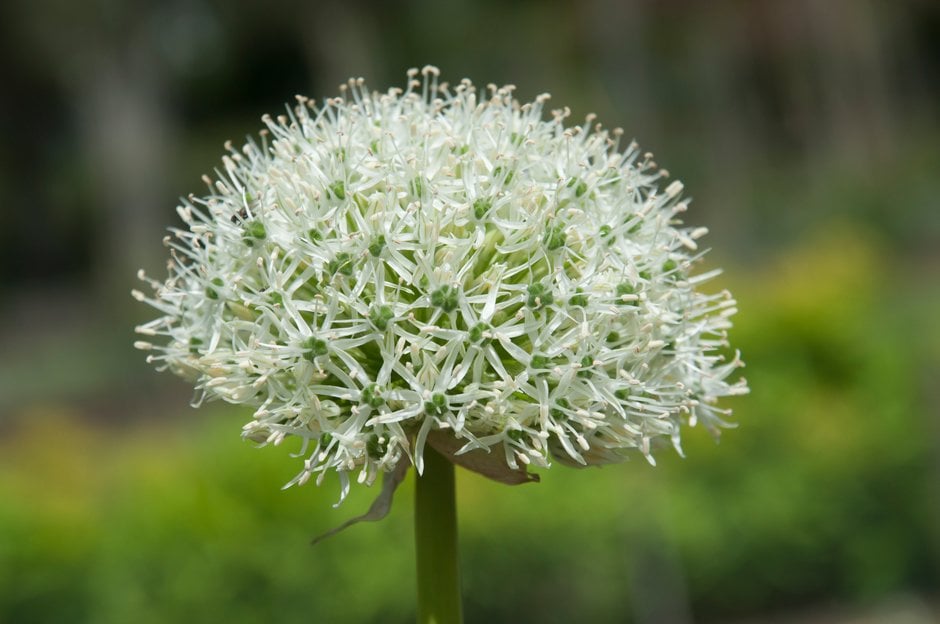Allium stipitatum 'Mount Everest'

allium 'Mount Everest'
A hardy perennial bulb, up to 1.2m tall, with grey-green, strap-shaped leaves. Fifty or more white, star-shaped flowers form tightly-packed balls, up to 12cm across, held on tall, ribbed stems in late spring and early summer
Size
Ultimate height
1–1.5 metresTime to ultimate height
2–5 yearsUltimate spread
0.1–0.5 metresGrowing conditions
Moisture
Moist but well–drained, Well–drainedpH
Acid, Alkaline, NeutralColour & scent
| Stem | Flower | Foliage | Fruit | |
| Spring | White | Green Grey Silver | ||
|---|---|---|---|---|
| Summer | White | Green Grey Silver | ||
| Autumn | ||||
| Winter |
Position
- Full sun
Aspect
West–facing or East–facing or South–facing
Exposure
Sheltered Hardiness
H5Botanical details
- Family
- Amaryllidaceae
- Native to GB / Ireland
- No
- Foliage
- Deciduous
- Habit
- Columnar upright
- Genus
Allium are bulbous herbaceous perennials with a strong onion or garlic scent, linear, strap-shaped or cylindrical basal leaves and star-shaped or bell-shaped flowers in an umbel on a leafless stem
- Name status
Accepted
How to grow
Cultivation
Easy to grow in fertile well-drained soil. Add grit when grown in clay soils to improve drainage. See allium cultivation
Propagation
Propagate by removing offsets in autumn
Suggested planting locations and garden types
- Architectural
- Cottage and informal garden
- Gravel garden
- City and courtyard gardens
- Wildlife gardens
- Cut flowers
- Flower borders and beds
Pruning
No pruning required
Pests
Generally pest-free
Diseases
Onion white rot and a downy mildew may occur
Love gardening
Sign up to receive regular gardening tips, inspiration, offers and more
View our Privacy Policy
Get involved
The Royal Horticultural Society is the UK’s leading gardening charity. We aim to enrich everyone’s life through plants, and make the UK a greener and more beautiful place.
